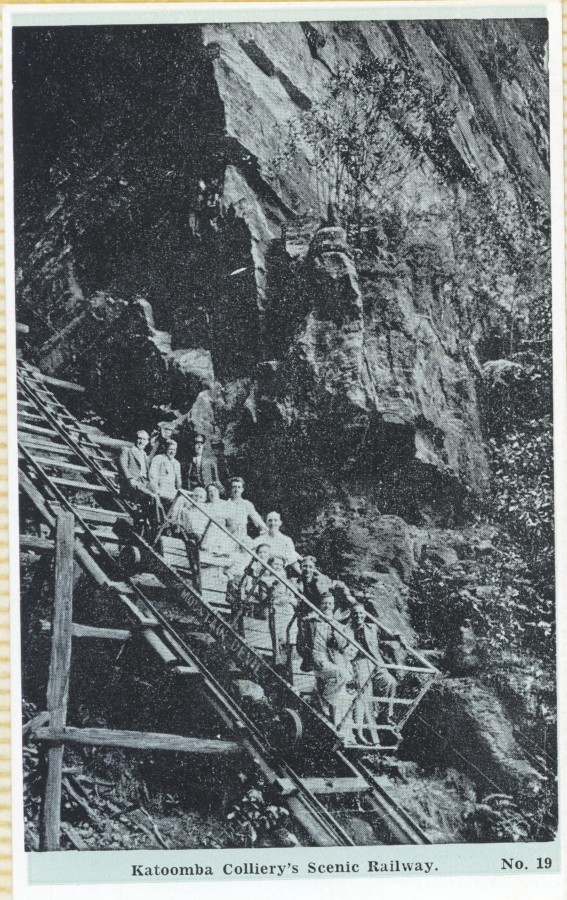In May of 1925, Harry Williams, who was the main shareholder in Katoomba Colliery Ltd. syndicate succeeded in buying the winder, steam engine, rails ropes and some coal skips from the closed down Blair Athol Colliery at Mt. Victoria.
The rails were destined for the Katoomba Colliery incline and underground, the skips for underground, the rope for haulage and of course the winder for hauling a coal skip up the incline.
This photograph shows the Blair Athol equipment “at grass” at the Katoomba colliery site, prior to installation. This is probably Harry in the photograph.

The first trolley to run the tracks was this “construction Trolley”. A simple frame with smaller wheels at the back, to carry sleepers and rail down the incline as building it progressed towards the bottom.
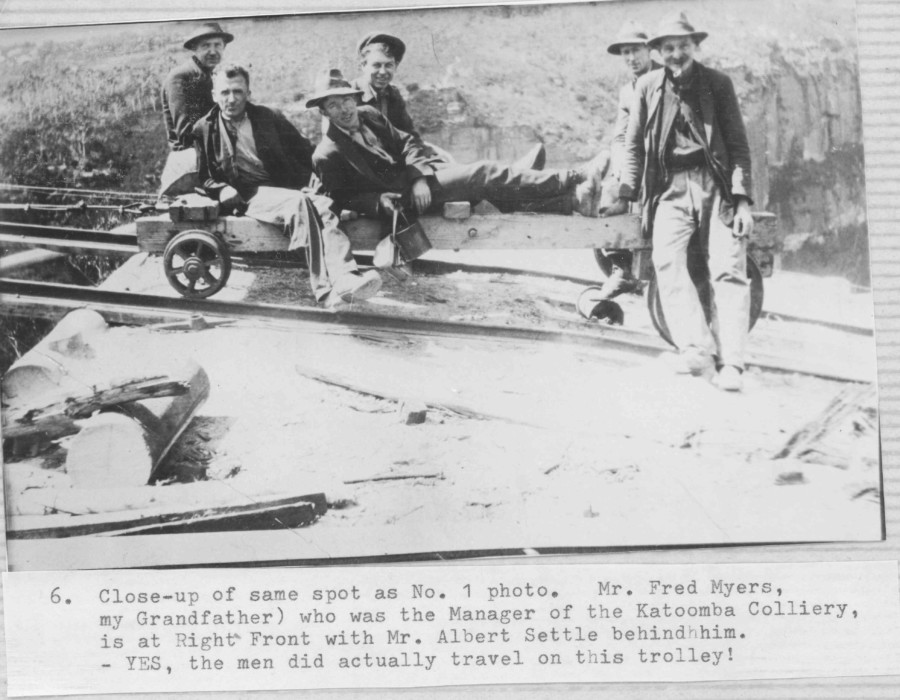
Once the incline was completed a coal skip was built with a drop down bottom to discharge coal into the bins.
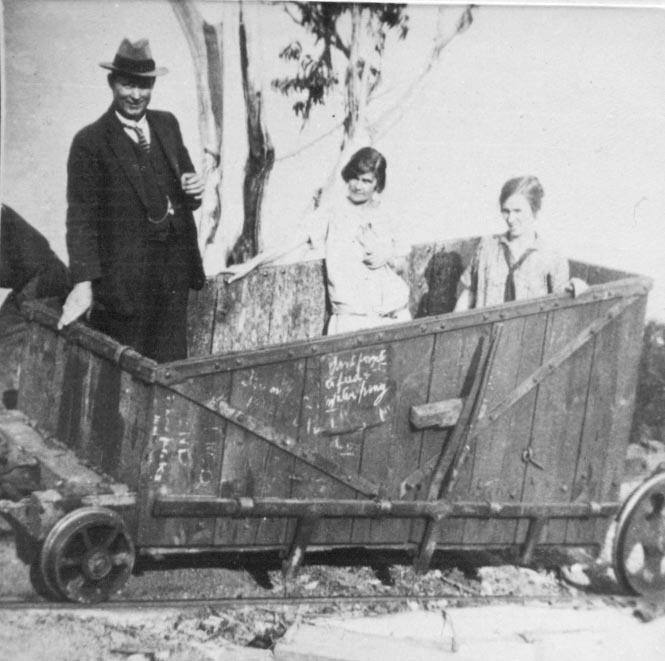
The handle jammed against the tapered wood block is holding the catches in place keeping the bottom closed. Push it to the right and the handle comes off the taper releasing the bottom of the skip. I don’t know how it was re-closed, somehow the base had to be pulled up and the catches re-engaged.
In the next photo the skip can be seen above the coal bin, with coal being shoveled into the Katoomba Colliery truck for delivery around town.
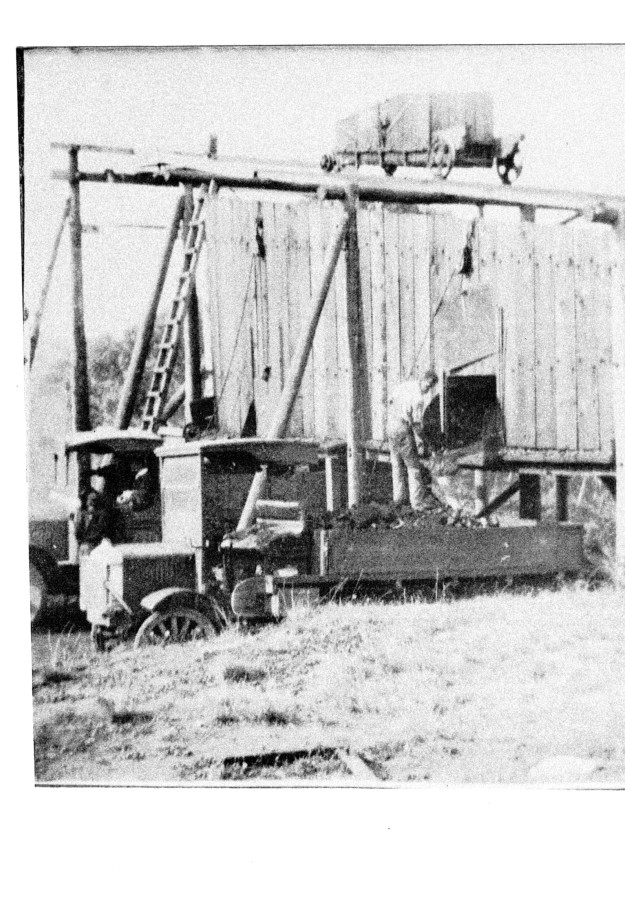
This iteration did not last very long however, a skip with larger capacity was built, and this is the one that was used for many of the photos carrying passengers. A standing board was put across the back for safety considerations.

This one is dated 4th April 1927, and the standing board can be clearly seen on the back of the now larger coal skip. “Hungry Boards”have been fitted on the front and off side to stop spillage as the coal runs down the tippler chute into the skip. Hessian has been draped over the side of the skip to keep the passengers clothes “clean”. The planks that the passengers are standing on are the “loading platform”. A special deck was built at the top to serve this purpose, seen in the photo below.

By the time that this photo was taken the “conductor”/miner had been provided with a seat at the back of the skip.
The ABC broadcast on 27th August 1926 gives a beautiful photo of the skip from the front.

The tie bars countering the spreading pressure of the coal load make very handy grips for the passengers. The hungry boards have not yet been fitted.
During this period the winder was being steam driven. Here is a photo of the boiler with Fred Meyers, Percy Hammon and xxxx
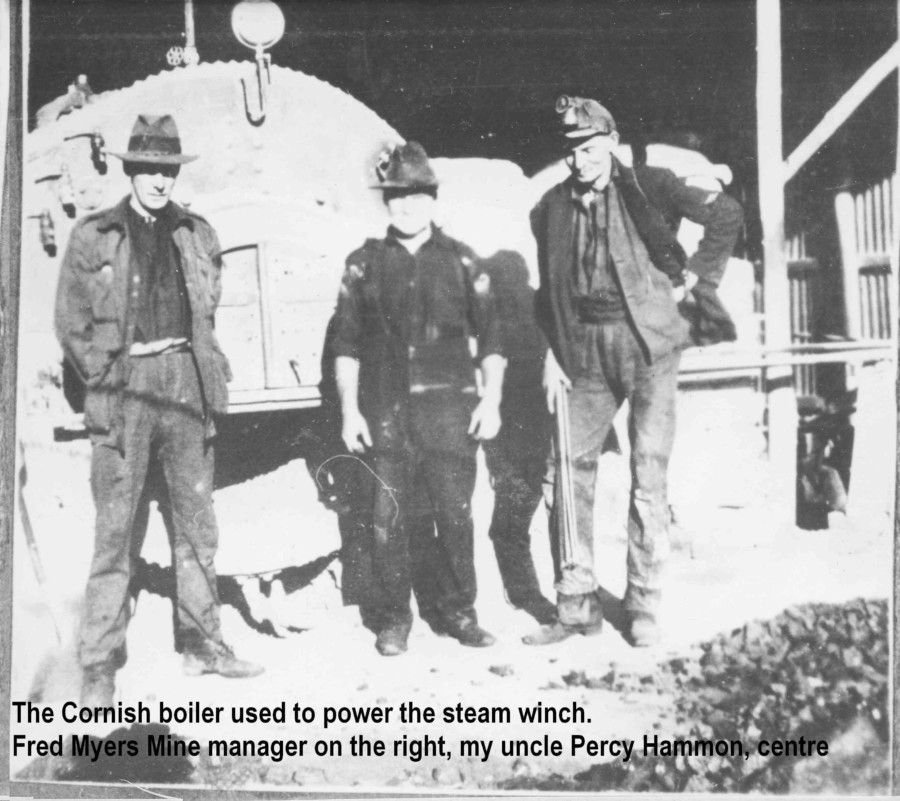
In this photo, the hungry boards have been added, hiding under the hessian. The two struts at the front are to take the weight of the coal inside and resist the front wall of the skip being pushed out.
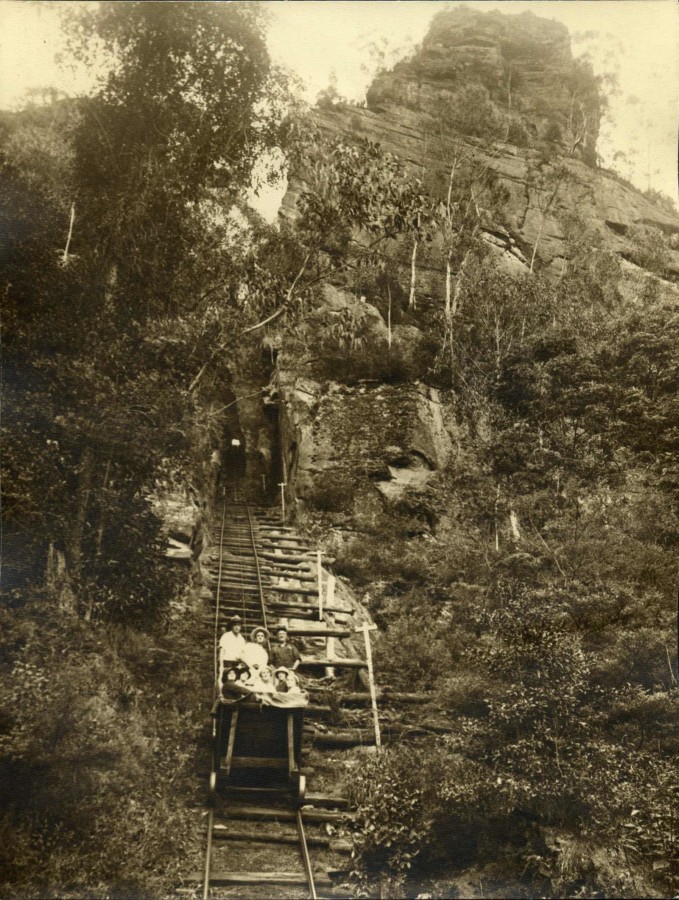
By 1933 the need for a dedicated passenger vehicle was solved by building “Jessie” a 12 seater, 3 rows of 3 seats and a “dickey” seat for 3. This well known photo by Albert Manning, was a publicity shot emphasizing the “suitable for all” message. A slight overloading situation there being 18 people in the photo! The poor little steam engine would have been struggling! The coal skip in the background was held in place by “sprags” through the spokes of the right hand wheels and a short length of chain as a backup. Even in this high resolution photo it is not apparent how this coal skip was unloaded into the coal bins.

Here is another photo by Manning of “Jessie” on “39”, which is how we refer to various positions along the incline by the gradient at that spot. The two gentlemen sitting in the front seat are Bob Neale and xxxx.
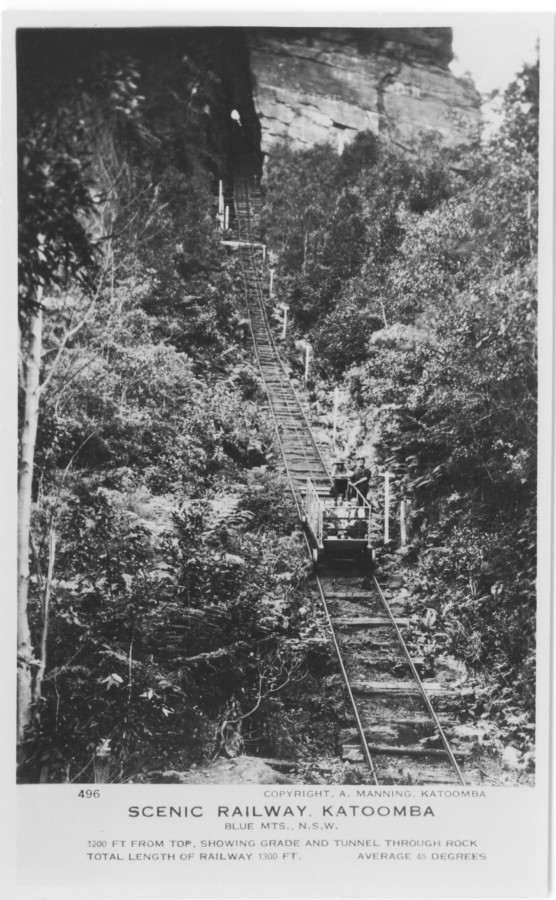
The other main change in passenger handling with the introduction of Jessie was changing the loading/unloading side to the Eastern side of the track. At the top a small platform was built which necessitated stepping across the running haulage rope to gain access.

At the bottom a flight of very steep steps was constructed which solved the problem of unloading on the 45 degree slope of the track. This change was driven by the proximity of the tunnel wall on the Western side of the car, possibly by an incident with an unwary passenger extending their hand when they shouldn’t!
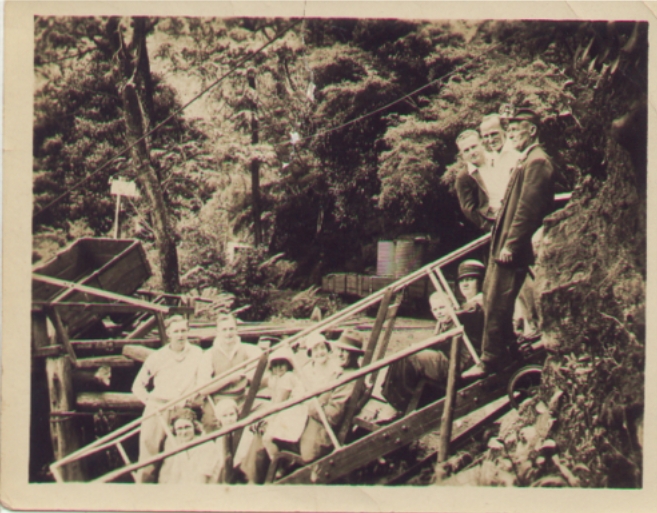
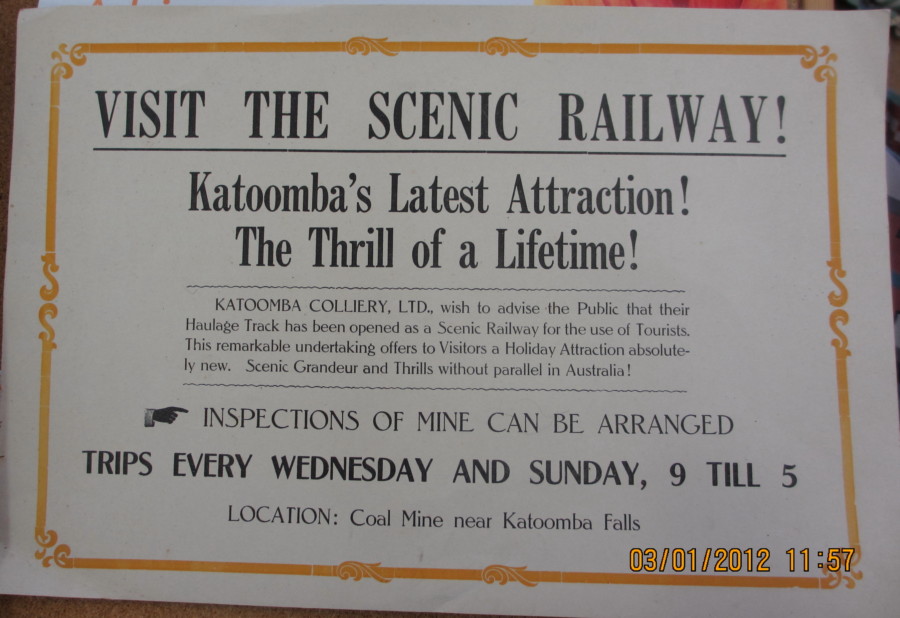
Jessie was quickly superseded by “The Mountain Devil” with four rows of seats for 3 pax each and a dickey seat. This car lasted until October of 1934 when the new electric winder supplied by Noyes Bros. was commissioned to take over from the steam powered winder from Blair Athol.
The new Mountain Devil utilised the full width of the 4ft gauge track by having the stringers, or main longitudinal beams, on the outside of the wheels, with the bearings on the outside ends of the axles, instead of on the inside of the wheels. This enabled passenger capacity to be increased to 28, a passenger load of 1.8 tonnes.

This carriage continued to run up and down the incline for many years. Up until 1945, when Katoomba colliery closed, it was used in conjunction with the coal skip, on weekends and holidays. The following photo shows the system used, with the coal skip approaching the top station with the 15 seater Mountain Devil sitting in the siding with Jessie in front..
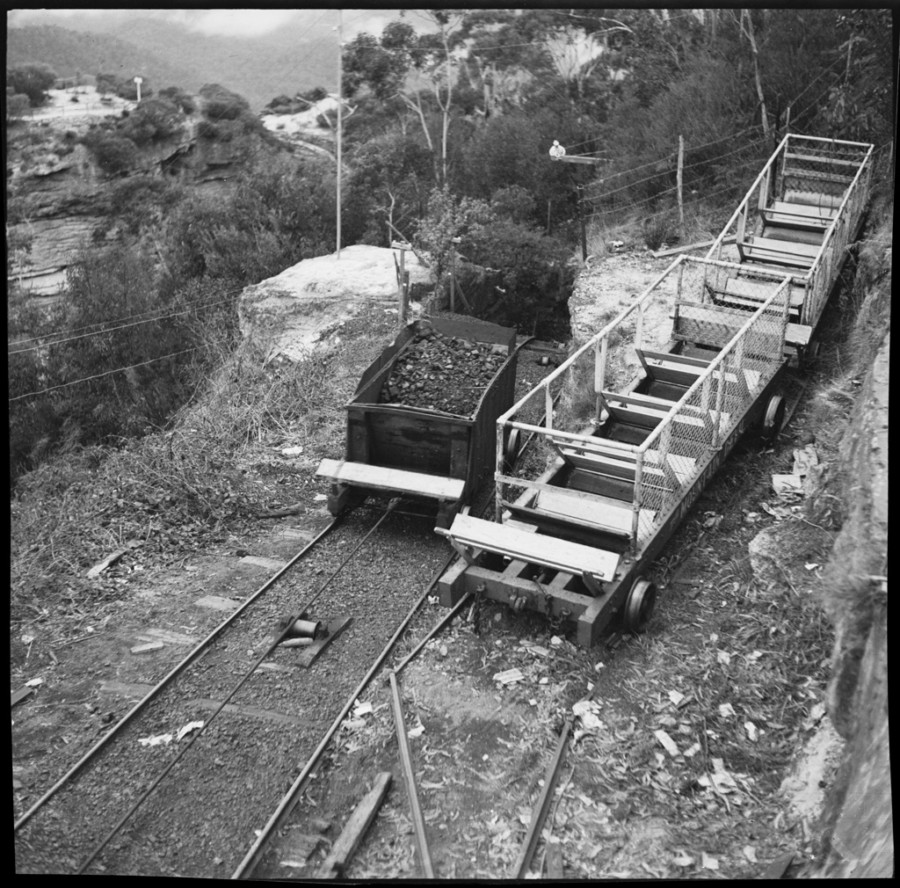
About 1952 major works were undertaken on the now Katoomba Scenic Railway. The 80 HP winder was extended to have two more drums, to allow for a counterweight and twin haulage ropes on a new duralium 28 seat passenger car. The 14 year old Mountain Devil II was decommissioned.




In 1966 a new winder was built with 160 HP slip ring electric motor drive, enabling a second car to be run in front of the first one. This meant extending both top and bottom platforms and doubling their width also.
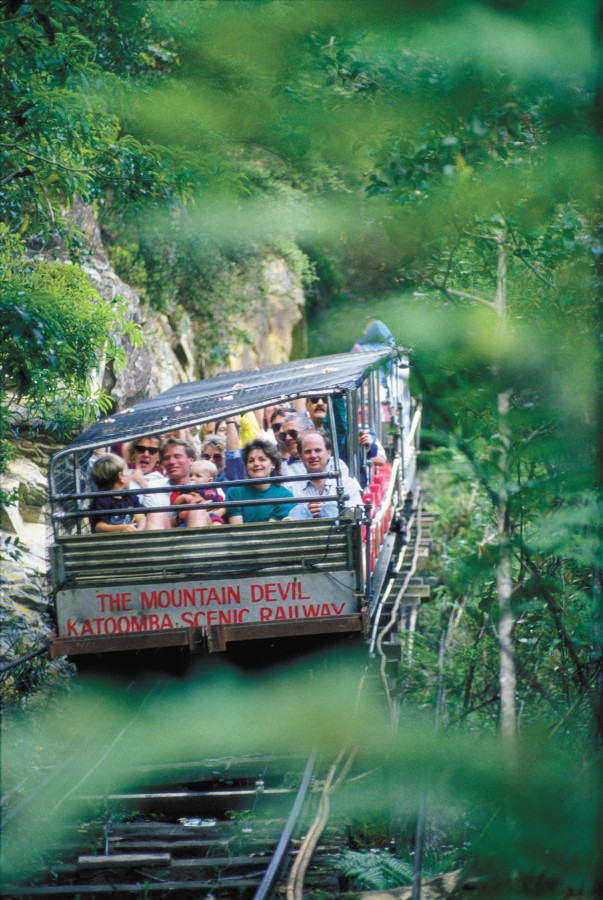
The second car used a new innovation in mesh, roll top fencing, it didn’t make as much noise as chain mesh and couldn’t be prised open.
In 1993 a new winder was commissioned, this time to haul three cars up and down the incline. An intermediate car was built, so that the original front car stayed there.

In 2014 a new winder, and a four car train with “inclineomatic” seats was introduced. This train has automatic fully enclosing doors, on both sides, to keep the OHS people happy. The winder has a fully redundant drive, meaning that if anything goes wrong there is a complete backup drive to take over.

Thank you. Return to the BMHS website.
